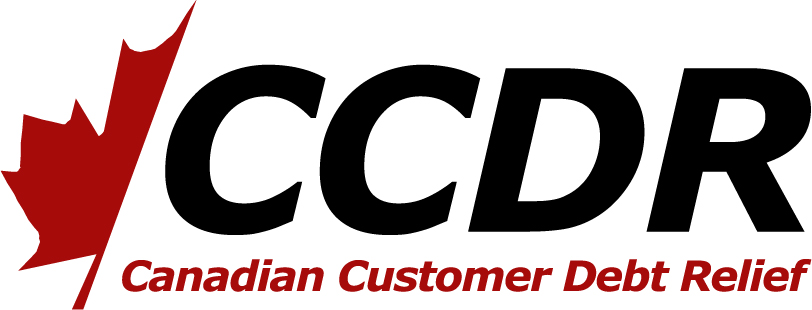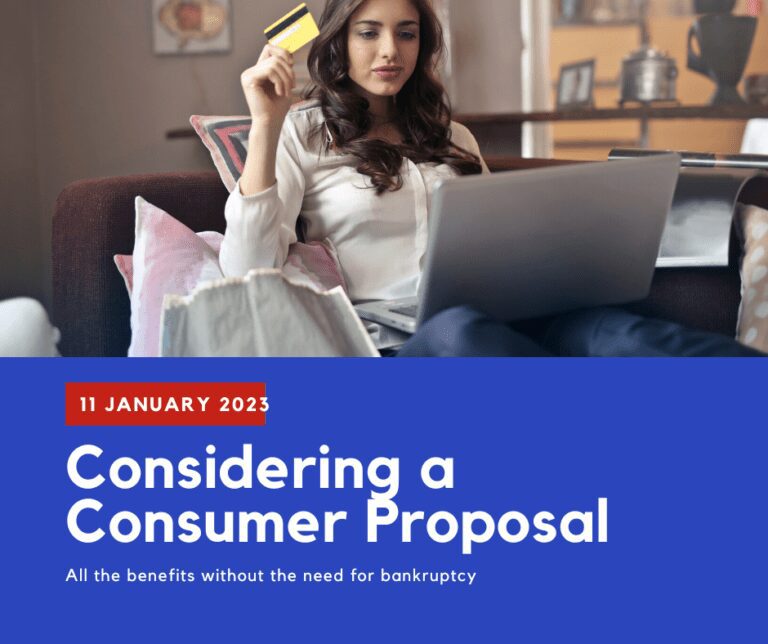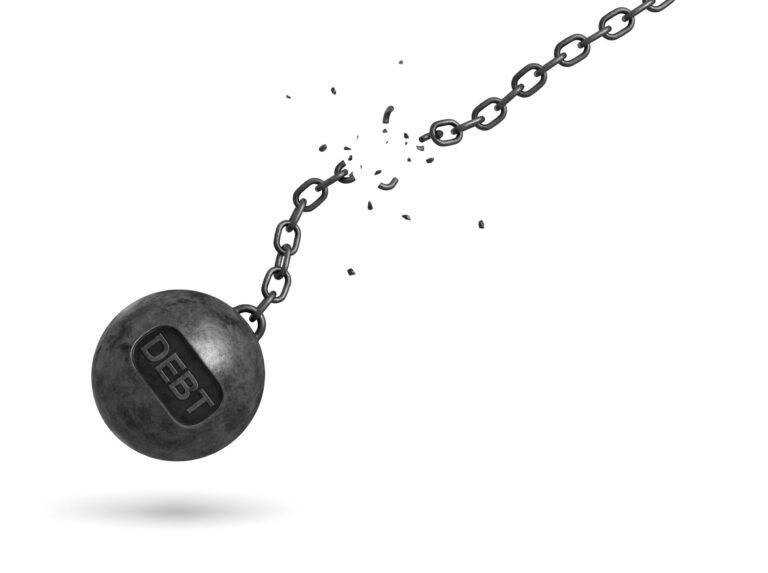Posts Tagged ‘Consumer proposal’
10 Proven Ways to Get Out of Debt Faster in Canada
-
Table of Contents
- Introduction
- How to Create a Debt Repayment Plan to Get Out of Debt Faster in Canada
- How to Use Credit Cards to Your Advantage to Get Out of Debt Faster in Canada
- How to Negotiate with Creditors to Get Out of Debt Faster in Canada
- How to Take Advantage of Government Programs to Get Out of Debt Faster in Canada
- How to Utilize Debt Consolidation to Get Out of Debt Faster in Canada
- Conclusion
“Start Your Debt-Free Journey Today with 10 Proven Ways to Get Out of Debt Faster in Canada!”
Introduction
Are you struggling with debt in Canada? If so, you’re not alone. According to a recent survey, nearly half of Canadians are in debt, with the average household owing $1.77 for every dollar of disposable income. Fortunately, there are ways to get out of debt faster. In this article, we’ll discuss 10 proven ways to get out of debt faster in Canada. From budgeting and debt consolidation to debt settlement and credit counseling, we’ll cover all the options available to help you get out of debt faster. So, let’s get started!
How to Create a Debt Repayment Plan to Get Out of Debt Faster in Canada
Are you looking for a way to get out of debt faster in Canada? If so, creating a debt repayment plan is a great way to get started. A debt repayment plan is a strategy that helps you pay off your debt in a timely and organized manner. It can help you stay on track and make sure you don’t miss any payments. Here’s how to create a debt repayment plan to get out of debt faster in Canada.
Step 1: Calculate Your Total Debt
The first step in creating a debt repayment plan is to calculate your total debt. This includes all of your outstanding loans, credit cards, and other debts. Make sure to include the interest rate and minimum payment for each debt. This will give you an accurate picture of your total debt and help you create a realistic repayment plan.
Step 2: Prioritize Your Debts
Once you’ve calculated your total debt, it’s time to prioritize your debts. Start by focusing on the debts with the highest interest rates first. This will help you save money in the long run by reducing the amount of interest you pay. You should also prioritize any debts that have late fees or other penalties.
Step 3: Create a Budget
Creating a budget is an important part of any debt repayment plan. Start by listing your income and expenses. This will help you determine how much money you have available to put towards your debt each month. Make sure to include all of your fixed expenses, such as rent and utilities, as well as any variable expenses, such as groceries and entertainment.
Step 4: Make a Plan
Once you’ve created a budget, it’s time to make a plan. Start by setting a goal for how much you want to pay off each month. Then, divide that amount between your debts. Make sure to pay the minimum payment on each debt, plus any extra you can afford. This will help you pay off your debts faster and save money on interest.
Step 5: Track Your Progress
Finally, make sure to track your progress. This will help you stay motivated and on track with your debt repayment plan. You can use a spreadsheet or an app to track your payments and progress. This will also help you identify any areas where you can make adjustments to your budget or repayment plan.
Creating a debt repayment plan is a great way to get out of debt faster in Canada. By following these steps, you can create a plan that works for you and helps you pay off your debt in a timely and organized manner. Good luck!
How to Use Credit Cards to Your Advantage to Get Out of Debt Faster in Canada
Are you looking for ways to get out of debt faster in Canada? Credit cards can be a great tool to help you pay off your debt faster. Here are some tips to help you use credit cards to your advantage and get out of debt faster.
1. Pay more than the minimum balance. When you make a payment on your credit card, make sure to pay more than the minimum balance. This will help you pay off your debt faster and save you money in the long run.
2. Take advantage of balance transfer offers. Many credit cards offer balance transfer offers, which allow you to transfer your balance from one card to another with a lower interest rate. This can help you save money on interest and pay off your debt faster.
3. Use rewards programs. Many credit cards offer rewards programs that allow you to earn points or cash back on your purchases. These rewards can be used to pay off your debt faster or to purchase items you need.
4. Pay off your highest interest rate debt first. When you have multiple credit cards, it’s important to pay off the one with the highest interest rate first. This will help you save money on interest and pay off your debt faster.
5. Monitor your spending. It’s important to keep track of your spending and make sure you’re not overspending. This will help you stay on top of your debt and pay it off faster.
By following these tips, you can use credit cards to your advantage and get out of debt faster in Canada. With a little bit of planning and discipline, you can be debt-free in no time.
How to Negotiate with Creditors to Get Out of Debt Faster in Canada
Are you looking for ways to get out of debt faster in Canada? Negotiating with creditors can be a great way to reduce your debt and get back on track financially. Here are some tips to help you negotiate with creditors and get out of debt faster.
1. Know Your Rights: Before you start negotiating with creditors, it’s important to understand your rights. In Canada, you have the right to negotiate with creditors to reduce your debt. You also have the right to dispute any inaccurate information on your credit report.
2. Be Prepared: Before you start negotiating with creditors, make sure you have all the information you need. This includes your current financial situation, a list of your debts, and a budget. Knowing your financial situation will help you make informed decisions when negotiating with creditors.
3. Be Honest: When negotiating with creditors, it’s important, to be honest about your financial situation. Don’t try to hide any information or make false promises. Creditors are more likely to work with you if they know you’re being honest.
4. Make an Offer: Once you’ve gathered all the information you need, it’s time to make an offer. Make sure your offer is reasonable and that you can afford to make the payments. If the creditor agrees to your offer, make sure you get it in writing.
5. Follow Through: Once you’ve reached an agreement with the creditor, it’s important to follow through. Make sure you make all the payments on time and keep track of your progress. This will help you stay on track and get out of debt faster.
Negotiating with creditors can be a great way to reduce your debt and get out of debt faster in Canada. By following these tips, you can make sure you’re prepared and get the best deal possible. Good luck!
How to Take Advantage of Government Programs to Get Out of Debt Faster in Canada
Are you struggling with debt in Canada? You’re not alone. Many Canadians are in the same boat. But the good news is that there are government programs available to help you get out of debt faster. Here’s how to take advantage of them.
1. Take advantage of the Bankruptcy and Insolvency Act. This act allows you to file for bankruptcy if you’re unable to pay your debts. It can help you get out of debt faster by allowing you to have your debts discharged or restructured.
2. Take advantage of the Consumer Proposal Program. This program allows you to make a proposal to your creditors to pay back a portion of your debt. This can help you get out of debt faster by reducing the amount you owe.
3. Take advantage of the Credit Counselling Services of Canada. This organization provides free credit counseling services to help you manage your debt. They can help you create a budget, negotiate with creditors, and develop a plan to get out of debt faster.
4. Take advantage of the Canada Student Loans Program. This program provides financial assistance to students who are struggling with debt. It can help you get out of debt faster by providing you with the funds you need to pay off your loans.
5. Take advantage of the Canada Pension Plan. This program provides financial assistance to seniors who are struggling with debt. It can help you get out of debt faster by providing you with the funds you need to pay off your debts.
By taking advantage of these government programs, you can get out of debt faster and start living a debt-free life. So don’t wait any longer – take action today and start taking advantage of these programs!
How to Utilize Debt Consolidation to Get Out of Debt Faster in Canada
Are you struggling with debt in Canada? If so, you’re not alone. Many Canadians are in the same boat, and it can be difficult to know where to turn for help. One option that can help you get out of debt faster is debt consolidation.
Debt consolidation is a process that involves taking out a loan to pay off multiple debts. This can help you simplify your finances and make it easier to manage your debt. It can also help you save money on interest and fees.
When you consolidate your debt, you’ll take out a loan to pay off all of your existing debts. This loan will usually have a lower interest rate than your existing debts, so you’ll save money on interest and fees. You’ll also have just one payment to make each month, which can make it easier to manage your finances.
There are a few different types of debt consolidation loans available in Canada. You can take out a personal loan, a home equity loan, or a line of credit. Each option has its own advantages and disadvantages, so it’s important to do your research and find the best option for your situation.
When you’re considering debt consolidation, it’s important to make sure you’re making the right decision. Make sure you understand the terms of the loan and the repayment schedule. You should also make sure you’re not taking on more debt than you can handle.
Debt consolidation can be a great way to get out of debt faster in Canada. It can help you save money on interest and fees, and make it easier to manage your finances. Just make sure you do your research and make sure it’s the right decision for your situation.
Conclusion
In conclusion, 10 Proven Ways to Get Out of Debt Faster in Canada is a great resource for anyone looking to get out of debt quickly and efficiently. By following the tips outlined in this article, Canadians can make a plan to pay off their debt faster and get back on track financially. With the right strategies and dedication, Canadians can become debt-free and enjoy the financial freedom they deserve.
Considering a Consumer Proposal
A consumer proposal is a legal process that allows individuals who are struggling with debt to propose a repayment plan to their creditors. It is an alternative to bankruptcy and can be a useful tool for those who want to avoid the negative consequences of bankruptcy, such as losing assets or damaging their credit score.
When considering a consumer proposal, it’s important to understand that it is a binding agreement between the individual and their creditors. Under the proposal, the individual agrees to repay a portion of their debts over a period of time, typically up to five years. In exchange, the creditors agree to waive the remaining portion of the debt.
One of the main benefits of a consumer proposal is that it can significantly reduce the amount of debt an individual owes. In most cases, the individual will only have to repay a portion of their debts, which can make it more manageable to repay. Additionally, interest charges on the debt are usually stopped once the proposal is accepted, which can help the individual save money in the long run.
Another benefit of a consumer proposal is that it can protect assets. Unlike bankruptcy, a consumer proposal allows individuals to keep their assets, such as their home or car, while they repay their debts. Additionally, a consumer proposal will not have as much of an impact on an individual’s credit score as a bankruptcy would.
It’s important to note that a consumer proposal requires the services of a licensed insolvency trustee (LIT) who will review the individual’s financial situation, assets and liabilities and help to prepare the proposal to the creditors. The LIT will also act as a mediator between the individual and their creditors during the process.
Before considering a consumer proposal, it’s important to fully understand the process and the consequences. It’s crucial to work with a reputable LIT who will explain all the details of the process and help the individual to make an informed decision. Additionally, it is important to understand that a consumer proposal will be reflected on an individual’s credit score for up to three years after the completion of the proposal.
Overall, a consumer proposal can be a useful tool for individuals who are struggling with debt. It can significantly reduce the amount of debt an individual owes, protect assets and not have as much of an impact on credit score as a bankruptcy. However, it is important to fully understand the process and work with a reputable LIT to make an informed decision.
Choosing the right debt help provider
Introduction
If you’re struggling with debt, there are a lot of options out there for getting help. But which one is right for you? This article will help answer that question and walk you through how to choose the best debt help provider.
Choose the best debt help provider for you
It is important to choose a debt help provider that is accredited, independent, and transparent.
- Accredited: The first thing to look for when choosing a debt help provider is whether or not it’s accredited by the government. This can be found on the website of your chosen provider. If you don’t see any accreditation information on their site, that’s probably a red flag and you should look elsewhere for help with your debts.
- Independent: You want to make sure that your debt management company doesn’t have any ties with other financial institutions (e.g., banks). This means they are not owned or affiliated with any banks or credit card companies and cannot offer products like loans through them either because it could compromise their independence as an unbiased third party in between you and those who owe you money such as credit card companies or lenders whose loans haven’t been paid off yet due to insufficient funds being available at the time when payment was due.”
Consumer Proposal
Consumer proposals are a negotiated settlement—but this one happens outside the courtroom and is legally binding, so once it’s agreed upon by all parties (including you), it must be followed through on. However, while this can be helpful in getting out of debt, it does require approval from creditors and approval from courts. These types of negotiations generally tend to result in better repayment terms.
How to choose the right debt help provider
- Look for a provider that is accredited.
- Consider a local provider.
- Make sure the provider has ample experience in debt relief.
- Choose an affordable company with transparent pricing.
- Beware of companies that are not flexible or supportive when you have questions or concerns about your debt relief plan (or anything else).
Don’t settle for something that doesn’t help.
It is important to know that it is not always necessary to settle for the first debt help provider you come across. Take some time and do your research before signing up with any company or person offering their services as a debt consolidator, credit counselor or debt management plan provider.
You don’t want to sign up with someone who doesn’t have your best interests in mind, nor should you sign up with them if they don’t meet all of your needs and/or budget requirements.
Conclusion
We hope the information here has helped you to decide which debt help provider is best for your situation. Remember, there are many out there so do your research before making a decision and don’t settle for something that doesn’t help you achieve your goals! To find out more feel free to reach out to us.
Debt Relief options in Canada
Introduction
Debt is a very common problem in Canada. It has become an epidemic that many people are dealing with on a daily basis. There are many ways to deal with your debt and we will help you decide which one works best for your situation.
Debt Consolidation
Debt consolidation is a great way to lower your monthly payments and get a lower interest rate. You can consolidate all your loans into one loan, which will help you pay off the debt faster. It’s important that you consolidate the right debts: personal loans, credit cards, and lines of credit should be consolidated into a low-interest card or line of credit because these are high-interest debts.
If you want to pay off your debt faster, then it may make sense for you to use debt consolidation as part of your strategy.
Bankruptcy
Bankruptcy is a legal process that allows you to get rid of your debts. It’s the last resort and should only be considered if other options have failed.
- What are the benefits of bankruptcy? It can relieve you from most or all of your debts.
- What are the drawbacks? It can have a negative impact on your credit score for up to 10 years after completing it. Additionally, during bankruptcy proceedings, creditors may try to recover money owed before they release any claims against you. This may mean additional costs and fees before the process is complete (and even afterwards). Finally, while bankruptcy itself doesn’t take very long—usually between 3-6 months—there will be some administrative steps required by both yourself and any creditors involved in order for everything to go smoothly (just like filing taxes).
Credit counselling
If you’re in a financial bind, credit counselling can help. Credit counsellors are trained professionals who can help you understand your options and make the best decisions for your personal financial situation. They’ll also provide advice on how to avoid future debt problems.
Credit counsellors are not:
- Debt management programs (DMPs). DMPs typically involve paying a company monthly fees in exchange for them negotiating with creditors on your behalf. While this may seem like a good way to deal with debt, it has its drawbacks—the most notable being that many DMPs charge extremely high fees and take 40% or more of what they collect from each creditor as commission, which means there’s less money left over for you after all the bills are paid off. In addition, by using one of these companies instead of negotiating directly with creditors yourself, chances increase that they won’t be able to get favourable terms—which could lead to further stress down the road when something goes wrong (like missed payments) because there’s no real relationship between you and your debt collector! Credit counselling is free; don’t waste money on unreliable services!
- Bankruptcy. If things get truly dire and bankruptcy seems like the only option left open before filing Chapter 7 or Chapter 13 bankruptcy papers then see our article What Is Bankruptcy? You might be surprised at how much better off financially speaking starting fresh under another name will pay off long term compared
Consumer proposal
A consumer proposal is a legal agreement between a debtor and their creditors. The debtor agrees to pay the creditors a fixed amount over a period of time, while the creditors agree to accept that payment and not pursue other legal action against you.
The proposal is filed with the courts, where it’s reviewed by an independent trustee who decides whether or not it should be accepted. If your proposal is accepted, interest on your debt will be reduced to 0%. The Balance owing is also reduced in most cases by up to 70%!
Coaching program
If you’re looking for a debt relief option that will help to improve your financial situation, coaching may be the right choice. Coaching programs offer support and guidance as you work towards getting out of debt by changing your spending habits, managing your money and making better choices with regard to purchases. These programs can also provide accountability, since coaches will often check in with their clients on a regular basis via phone calls or meetings.
Coaching is based on the idea that if you have someone to guide you through the process of achieving your goals, then it’s more likely to happen quickly and efficiently than if you were trying to do it alone. A coach can provide motivation when necessary and help keep things like motivation levels high by encouraging clients in their efforts towards reaching these goals. It also gives people who need extra encouragement or motivation an outlet for this sort of support without having to think about where else they might get it from (such as family members).
5 different services to help resolve debt issues, each one different in it’s own way. Please pick the one that is right for you.
We offer 5 different services to help resolve debt issues, each one different in it’s own way. Please pick the one that is right for you.
- Debt Consolidation: Debt consolidation is a process where multiple debts are combined into a single payment that is paid off over time. This process can be used with your current creditors or new ones (if they will accept), and can help lower the amount of interest you pay per month on your existing debts. It will not reduce the amount owed to creditors however, which means they will still require repayment even after this process has been completed successfully.
- Bankruptcy: Bankruptcy has been around as long as money itself but many people do not know what it actually entails so we have written an article explaining everything there is to know about filing bankruptcy in Canada if this option interests you! In short though, filing for bankruptcy allows individuals who are insolvent due to their inability to pay back debts due their financial situation with reasonable effort over a reasonable period of time (3 years) obtain relief from those obligations under certain circumstances such as unemployment or disability; financial hardship caused by illness; unforeseen life events such as divorce/separation etc…
Conclusion
We hope this article has helped you understand the different debt relief options available in Canada. If you have any questions or would like to talk about your personal situation, please contact our office at (888) 354-4706. If you are not ready to talk on the phone or in person Chat with Jennie at www.ccdr.ca We are here to help!



